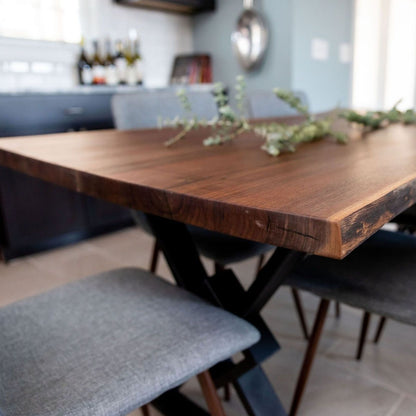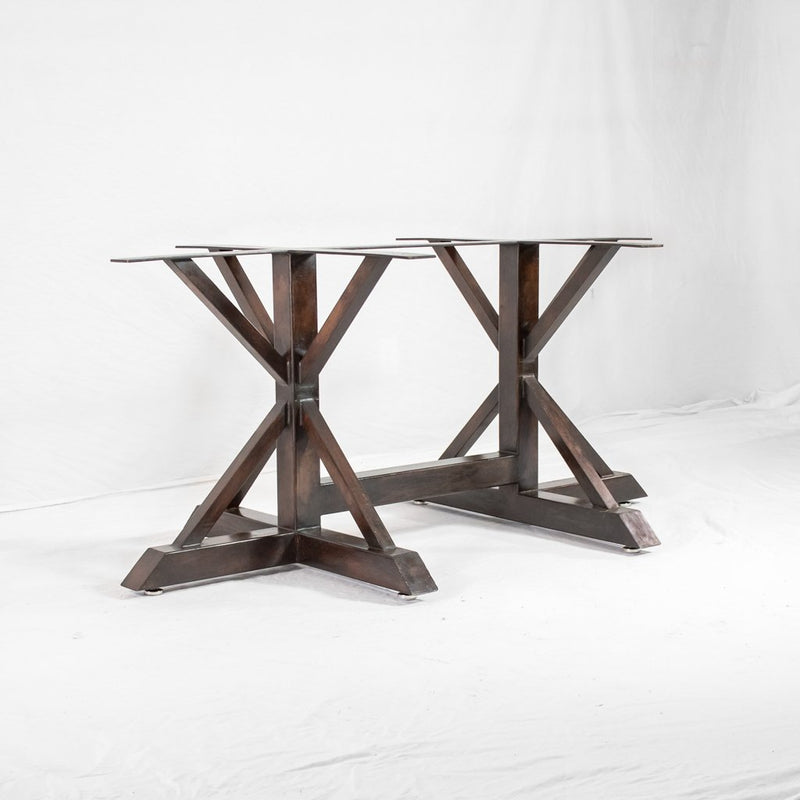The Impact of Dining Room Table Legs on Your Table's Overall Design
The Impact of Dining Room Table Legs on Your Table's Overall Design
Blog Article
Expert Tips for Installing Dining-room Table Legs for Maximum Stability
When it comes to mounting dining room table legs, achieving maximum security is paramount for both functionality and aesthetic appeals. What specific techniques can boost security even additionally?
Pick the Right Legs
When choosing the appropriate legs for your dining-room table, it is vital to take into consideration both functionality and appearances. The legs you choose will significantly affect the general design and stability of the table. First, examine the table's meant use; if you expect constant gatherings, stronger legs, such as those made from solid timber or steel, might be better, as they provide boosted sturdiness and assistance.
Next, take into consideration the elevation and style of the legs in connection to the table top. Typical dining tables generally vary from 28 to 30 inches in height, so make certain the legs straighten with this criterion for convenience. The design of the legs need to enhance the layout of the table top-- whether it be contemporary, rustic, or standard. For instance, tapered legs can add a contemporary touch, while turned legs may convey an extra traditional visual.

Select Appropriate Equipment
How can the appropriate equipment improve the stability and longevity of your dining area table? The selection of proper equipment is vital to guaranteeing that the legs of your table are firmly attached and able to withstand regular use. Top notch screws, screws, and braces supply the essential strength to support the weight of the table, in addition to any kind of added lots put upon it throughout events or dishes.
When selecting screws, go with those made from sturdy products such as stainless-steel or brass, which stand up to deterioration and keep honesty with time. The size of the screws is just as vital; they need to permeate deeply into the table's structure without compromising honesty. For bolted connections, take into consideration using lock washers to stop loosening as a result of resonance or activity.
Furthermore, utilizing corner braces can add extra assistance, specifically for bigger tables or those with larger tops. These braces distribute weight uniformly and help keep the table's form. Guaranteeing that the hardware you pick is ideal for the details materials of your table will further enhance its total security and durability, allowing you to appreciate your dining experience for many years ahead.
Ensure Appropriate Placement
Correct positioning of dining area table legs is vital for both visual appeal and functional stability. Misaligned legs can lead to an irregular tabletop, which might not only be aesthetically unattractive but likewise compromise the table's functionality. To achieve optimum positioning, start by determining the range from the table's corners to the leg add-on points. This makes certain that each leg is positioned equidistant from the sides, creating a well balanced look.
Utilize a degree throughout installation to confirm that each leg is vertical to the tabletop. This step is important, as even small inconsistencies can escalate into considerable security issues gradually. It is suggested to mark the preferred leg placements on the bottom of the table with a pencil or covering up tape before protecting them. This technique serves as an aesthetic overview, allowing for modifications as required.
Moreover, double-check the placement after the first screws are tightened up, as adjustments may be required before completely protecting the equipment. By focusing on appropriate positioning, you not just improve the table's total layout yet additionally make certain that it continues to be useful and stable for many years to find.

Consider Weight Distribution
After ensuring correct placement of the dining-room table legs, it is very important to consider weight circulation to improve stability and capability. dining room table legs. Correct weight distribution is essential in preventing tottering and making sure that the table can sustain its intended lots without danger of tipping or collapsing
When placing the legs, ensure they are placed at equivalent distances from the facility of the table to evenly disperse the weight across the structure. Consider the weight of the tabletop and any products that will frequently rest on it, such next page as ornamental items or tabletop appliances. Tables with much heavier surfaces need to preferably have legs located closer to the edges, as this optimizes the base of assistance and decreases the danger of instability.
Furthermore, if the table is planned for use in a high-traffic area, consider utilizing heavier products for the legs or adding maintaining elements, such as cross-bracing or a reduced shelf - dining room table additional resources legs. These modifications can assist maintain balance and prevent moving during usage. Eventually, a well-considered weight circulation approach will dramatically improve the table's general efficiency, ensuring it stays a useful and appealing focal point for your eating area
Test Stability Prior To Usage
Examining the stability of the dining-room table before use is an important step that should not be neglected. Making sure that the table is steady and secure can prevent accidents and lengthen the life-span of the furnishings. Begin by using gentle stress to various points on the table surface. Lower on the facility and after that along the edges, changing or observing any wobbling. If the table shows instability, identify the legs or joints that may call for modification.
Next, check that all fasteners and screws are tightened up correctly. Loosened links can cause instability and potential damage with time. If necessary, use timber adhesive on joints to boost security, making certain to allow ample drying time.

Final Thought
To conclude, the setup of dining area table legs requires cautious consideration of products, positioning, weight, and equipment distribution to accomplish optimum stability. By choosing premium bolts and sturdy legs, making certain precise positioning, and dispersing weight evenly, the structural honesty of the table can be significantly improved. Performing a stability test prior to routine usage further makes sure that the table will certainly hold up against everyday pressures, thus supplying a risk-free and trusted eating experience.
When it comes to installing dining room table legs, accomplishing maximum stability is critical for both performance and looks. The legs you choose will significantly affect dig this the total design and stability of the table (dining room table legs). Common eating tables usually range from 28 to 30 inches in height, so make certain the legs straighten with this standard for convenience.Correct placement of dining area table legs is essential for both visual allure and useful stability.In final thought, the setup of eating area table legs needs careful factor to consider of materials, weight, alignment, and hardware circulation to attain maximum security
Report this page